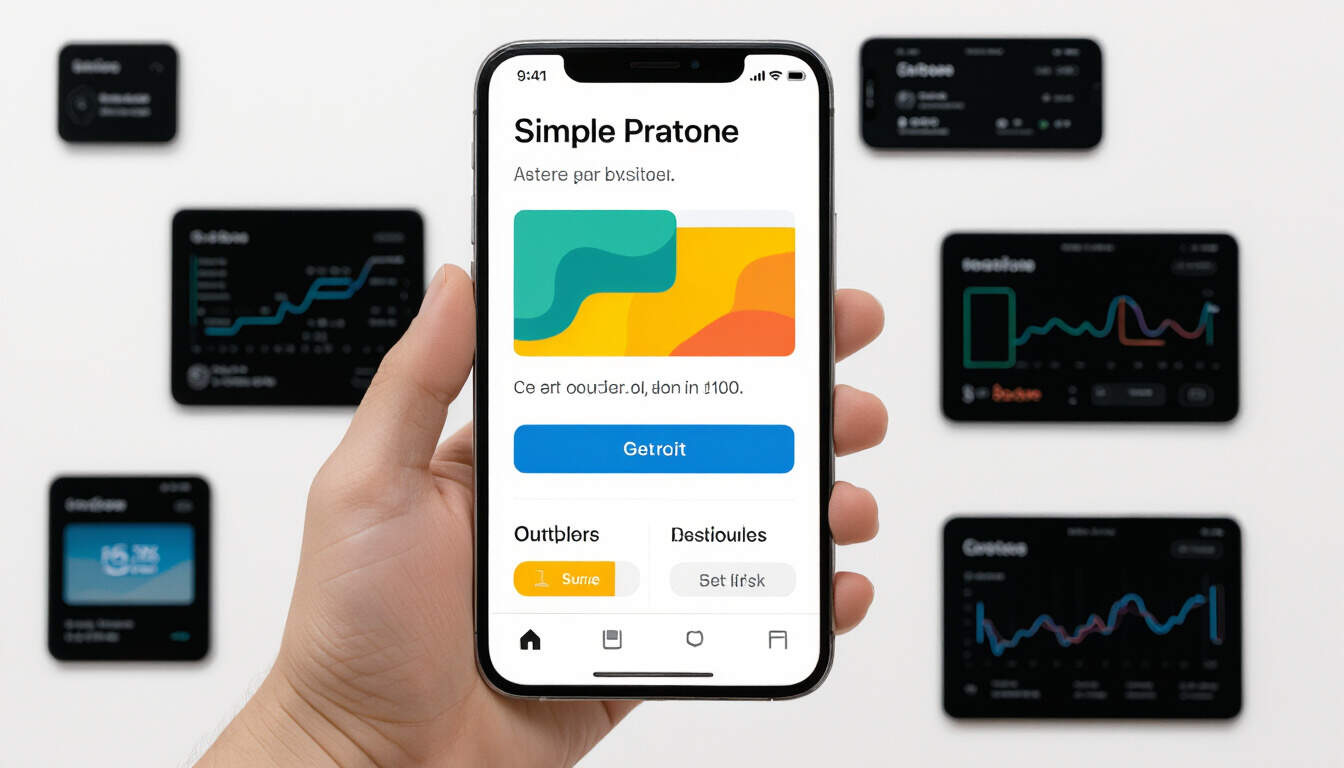Optimizing Mobile Prototypes with Zero-Code Tools
 by Verner Mayer
by Verner Mayer
Discover how zero-code tools simplify the creation and optimization of mobile prototypes for MVP validation. This approach helps entrepreneurs test ideas quickly and efficiently, saving time and resources while gathering user feedback.

Zero-code tools have transformed how teams build and refine mobile prototypes, making it easier to validate minimum viable products (MVPs). These platforms allow users to create interactive designs without writing code, focusing instead on core ideas and user experience.
In the early stages of product development, creating a mobile prototype serves as the foundation for testing concepts. By using zero-code tools, entrepreneurs can quickly assemble app interfaces that mimic real functionality. This method reduces the time needed to move from idea to testable product, enabling faster iterations based on initial feedback.
One key aspect of mobile optimization involves ensuring prototypes perform well on various devices. zero-code tools often include features for responsive design, which adapt layouts to different screen sizes. This helps in identifying potential issues early, such as touch interactions or loading speeds, before full development begins.
When building for mobile, consider the user interface elements that make an app intuitive. Simple drag-and-drop interfaces in zero-code platforms let creators add buttons, forms, and navigation without technical barriers. For instance, testing a prototype on a smartphone can reveal how users navigate screens, leading to refinements that enhance usability.
Strategies for MVP validation start with setting clear goals. Define what success looks like for your prototype, such as user engagement or conversion rates. Then, use zero-code tools to build a basic version that includes essential features. This approach allows for rapid testing with real users, providing valuable insights into what works and what needs adjustment.
Benefits of Zero-Code for Mobile Prototyping
Using zero-code tools offers several advantages for startups and product managers. First, it lowers the entry barrier for non-technical teams, meaning anyone can contribute to the prototyping process. This collaboration speeds up innovation and ensures the prototype aligns with market needs.
Another benefit is cost efficiency. Traditional coding requires skilled developers and significant budgets, but MVP validation through zero-code options minimizes expenses. Teams can allocate resources to other areas, like marketing or user research, while still achieving a functional prototype.
Optimization techniques play a crucial role in making prototypes effective. For mobile apps, focus on performance factors such as battery usage and data consumption. Zero-code platforms often provide previews and simulations that highlight these areas, allowing creators to make adjustments before validation tests.
Practical Steps for Prototyping and Optimization
To get started, select a zero-code tool that supports mobile features like gestures and notifications. Begin by sketching out your app's flow on paper or a digital board. Then, import these ideas into the tool to create an interactive prototype.
Once built, test the prototype with a small group of users. Gather feedback on aspects like ease of use and visual appeal. Based on responses, optimize elements such as color schemes or button placements to improve the overall experience.
For deeper validation, integrate basic analytics into your prototype if the tool allows. This can track user paths and drop-off points, helping you refine the design iteratively. Remember, the goal is to validate core assumptions quickly, so keep the prototype simple and focused.
In practice, many teams find that mobile optimization leads to better MVP outcomes. By prioritizing user-centered design, prototypes become more engaging and effective at capturing interest. This process not only validates ideas but also builds confidence in the product's potential.
Overcoming Common Challenges
While zero-code tools are straightforward, challenges like limited customization can arise. However, most platforms offer enough flexibility for mobile needs, such as custom components or integrations. Address these by learning the tool's capabilities through tutorials and community resources.
Another challenge is ensuring the prototype feels realistic. Use features that simulate real app behavior, like transitions between screens, to make testing more accurate. This realism aids in reliable MVP validation, as users provide feedback based on actual interactions.
Ultimately, the motivation comes from seeing ideas turn into reality. With zero-code tools, entrepreneurs can iterate rapidly, turning feedback into improvements and moving closer to a successful launch. This practical path empowers teams to innovate without waiting for technical expertise.
By focusing on mobile optimization through zero-code methods, product managers can achieve efficient MVP validation. The key is to stay iterative, use feedback wisely, and keep the process engaging for all involved.
